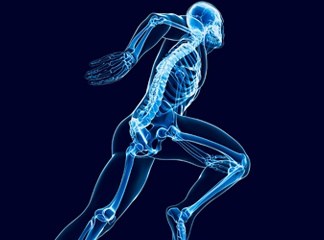Introduction
Fibromyalgia is a complex and often misunderstood chronic condition that can significantly impact an individual's quality of life. Characterized by widespread pain, fatigue, and a host of other symptoms, fibromyalgia can leave those affected feeling isolated and overwhelmed. Fortunately, there is hope. Many individuals are finding relief from fibromyalgia symptoms through holistic methods. This article explores these methods in detail, emphasizing the role of osteopathy and osteopathic medicine in managing fibromyalgia.
Finding Relief from Fibromyalgia Symptoms through Holistic Methods
Holistic approaches to health consider the whole person—mind, body, and spirit. When it comes to fibromyalgia, this means addressing not just the physical pain but also emotional well-being and lifestyle factors. The goal is to achieve balance and harmony within the body, leading to more effective pain management and improved overall health.
Understanding Fibromyalgia: A Complex Condition
Fibromyalgia affects millions of people worldwide yet remains one of the most underdiagnosed conditions. The complexity lies in its symptoms, which may include:
- Chronic pain Fatigue Sleep disturbances Cognitive difficulties (often referred to as "fibro fog") Mood disorders like anxiety or depression
How Osteopathy Can Help
Osteopathic medicine offers a unique approach to treating fibromyalgia by focusing on the body's musculoskeletal system. An osteopath or osteopathic doctor will evaluate how your bones, joints, muscles, and connective tissues work together to find areas of dysfunction that could be contributing to your pain.
The Role of Biomechanics in Pain Management
Biomechanics refers to the study of movement and how different forces interact with the body. Understanding biomechanics is crucial for treating conditions like fibromyalgia because it helps identify improper movement patterns that may exacerbate pain.
The Importance of Diagnosis in Fibromyalgia Treatment
Diagnosing fibromyalgia involves ruling out other conditions that could cause similar symptoms. A thorough assessment by a healthcare professional familiar with osteopathy can lead to more accurate treatment options.
Common Diagnostic Tools Used by Osteopathic Doctors
Patient history review Physical examination Pain assessments (e.g., Widespread Pain Index) Laboratory tests (to rule out other conditions)Holistic Treatment Options for Fibromyalgia
1. Osteopathic Manipulative Treatment (OMT)
OMT involves hands-on techniques used by an osteopath to relieve pain and improve function. This treatment can help realign bones and joints while enhancing blood flow and reducing muscle tension.
Benefits of OMT for Fibromyalgia Patients
- Reduces muscle tightness Improves joint mobility Enhances circulation
2. Mindfulness and Meditation
Mindfulness practices encourage patients to focus on their present experience without judgment. Techniques such as meditation can help reduce stress levels, which are often linked to increased pain perception in individuals with fibromyalgia.

How Meditation Affects Pain Perception?
Studies have shown that regular meditation can alter brain activity related to pain processing while promoting relaxation responses.
3. Nutritional Therapy
Diet plays a crucial role in managing inflammation associated with fibromyalgia symptoms. Consulting with a nutritionist who understands osteopathy can provide tailored dietary recommendations aimed at reducing inflammation.
Anti-inflammatory Foods to Consider:
- Leafy greens (spinach, kale) Fatty fish (salmon, mackerel) Nuts and seeds Olive oil
4. Regular Physical Activity
Engaging in regular exercise tailored for those with chronic pain can improve flexibility and strength while reducing fatigue levels.
Types of Exercise Beneficial for Fibromyalgia:
Low-impact aerobic exercises (walking, swimming) Stretching routines (yoga or tai chi) Strength training with light weightsPsychological Approaches: Addressing Emotional Well-being
5. Cognitive Behavioral Therapy (CBT)
CBT has proven effective for many chronic illness patients by helping them reframe negative thoughts associated with pain into more positive or neutral perspectives.
How Does CBT Work?
CBT encourages patients to identify triggers for their discomfort and develop coping strategies that minimize their emotional response to pain.
6. Support Groups
Connecting with others who understand what you're going through can alleviate feelings of isolation often experienced by those living with chronic illnesses like fibromyalgia.
Frequently Asked Questions about Holistic Methods for Fibromyalgia Relief
1. What are some common symptoms of fibromyalgia?
Fibromyalgia is characterized by widespread muscle pain, fatigue, sleep disturbances, cognitive difficulties ("fibro fog"), and mood changes such as anxiety or depression.
2. How does osteopathic medicine differ from traditional medicine?
Osteopathic medicine emphasizes the body's ability to heal itself through a holistic approach that considers lifestyle factors alongside physical osteopath southlake tx health—focusing more on prevention than treatment alone.
3. Can diet really affect my fibromyalgia symptoms?
Yes! Certain foods may contribute to inflammation; incorporating anti-inflammatory foods into your diet may help manage your symptoms effectively.
4. Is exercise beneficial for people with fibromyalgia?
Absolutely! Engaging in regular low-impact exercise helps maintain flexibility and strength while reducing fatigue levels—important aspects when dealing with chronic pain syndromes like fibromyalgia.
5. How can mindfulness practices help manage my condition?
Practices such as mindfulness meditation help increase awareness around thoughts related to stressors or discomforts—ultimately allowing you greater control over your emotional reactions toward chronic pain experiences.
6. Should I consult an osteopath if I have fibro?
Consulting an osteopath could provide valuable insights into musculoskeletal alignment issues contributing negatively towards your existing symptoms—offering targeted treatments focused on restoring balance within your body’s systems!
Conclusion
Finding relief from fibromyalgia symptoms through holistic methods requires a multifaceted approach that includes understanding one's body mechanics while utilizing various treatment modalities such as osteopathy, nutrition therapy, psychological support systems—all tailored specifically toward individual needs! By exploring these avenues holistically rather than solely chasing symptom relief—which often proves temporary—you stand a better chance at achieving long-lasting results!
As we continue our journey towards healing together—a blend between conventional medical wisdom coupled alongside innovative holistic practices—is essential not only for improving lives afflicted by conditions like fibro but also nurturing well-being across all dimensions human beings possess! Remember: You’re not alone; there’s hope within reach!